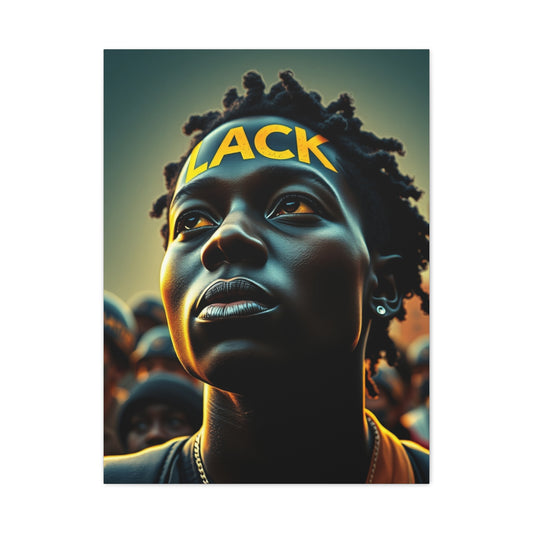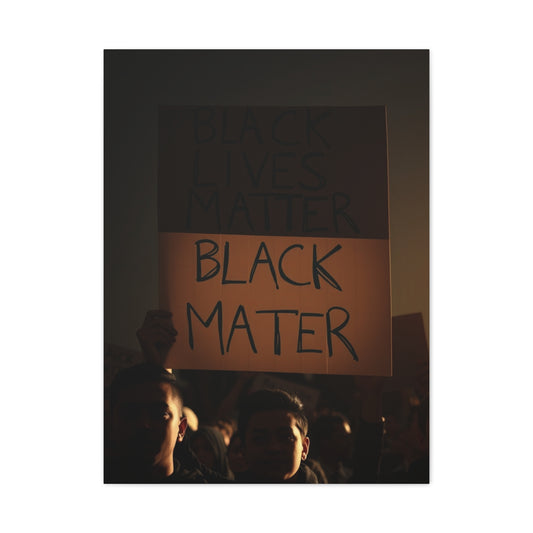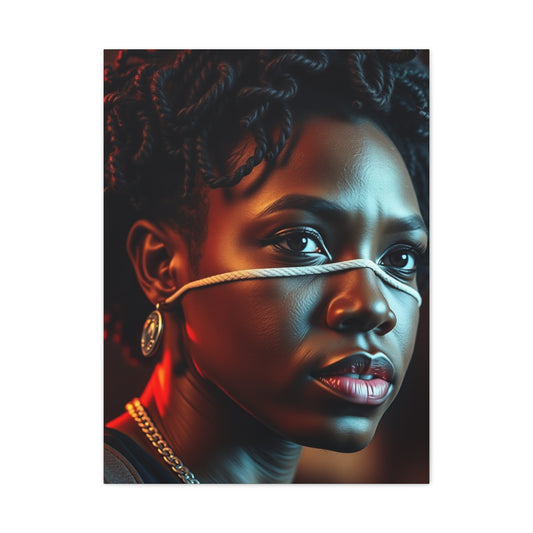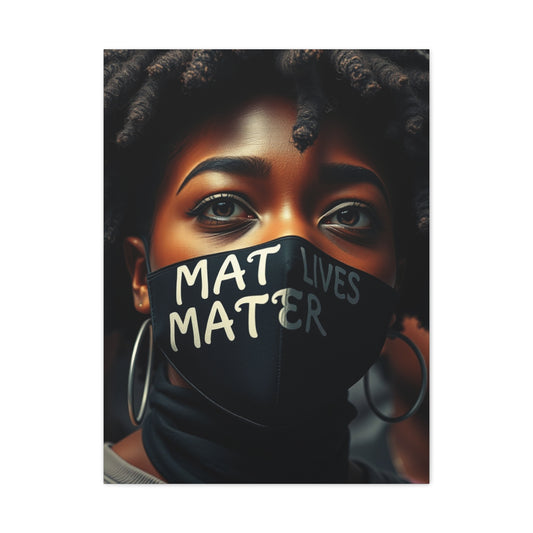Catalyzing Social Change with Black Lives Matter Wall Art and Murals
Contemporary urban landscapes have undergone a profound transformation, evolving into vibrant galleries where artistic expression intersects with social consciousness. The phenomenon of street art transcending mere aesthetic appreciation to become a powerful catalyst for societal change represents one of the most compelling developments in modern activism. This artistic revolution demonstrates how creative expression can challenge established norms, amplify marginalized voices, and inspire collective action toward meaningful reform.
The intersection of artistry and advocacy creates a unique platform where visual narratives communicate complex social messages with unprecedented clarity and emotional resonance. These artistic interventions transform mundane urban surfaces into thought-provoking installations that challenge passersby to confront uncomfortable truths about systemic inequalities, racial injustice, and the urgent need for societal transformation.
Urban murals and street installations serve as democratic forums where artistic expression democratizes political discourse, making complex social issues accessible to diverse audiences regardless of educational background or socioeconomic status. This accessibility represents a fundamental departure from traditional forms of political engagement, creating opportunities for meaningful dialogue across cultural and demographic boundaries.
The proliferation of socially conscious street art reflects a broader cultural shift toward grassroots activism, where communities reclaim public spaces as platforms for collective expression and resistance. These artistic interventions challenge traditional power structures by transforming overlooked urban corners into sites of profound cultural significance and social commentary.
Artistic Rebellion:
The genealogy of street art as a vehicle for social change traces back decades, revealing a rich tradition of artistic resistance that challenges authoritarian control over public discourse. This historical trajectory demonstrates how marginalized communities have consistently utilized unauthorized artistic expression to circumvent censorship and communicate powerful messages about systemic oppression, economic inequality, and political corruption.
Early practitioners of subversive street art recognized the revolutionary potential of transforming abandoned walls, neglected buildings, and forgotten corners into vibrant testimonies of social discontent. These pioneering artists understood that unauthorized artistic expression could penetrate mainstream consciousness in ways that traditional forms of protest often failed to achieve, creating lasting impressions that continued to influence public opinion long after demonstrations concluded.
The evolution of graffiti culture from perceived vandalism to recognized artistic expression reflects broader societal shifts in understanding the legitimate role of unauthorized creative expression in democratic discourse. This transformation demonstrates how persistent artistic movements can gradually reshape public perception and establish new frameworks for evaluating the social value of unauthorized creative interventions.
Contemporary street artists inherit a legacy of resistance that spans generations, building upon established traditions while incorporating modern techniques, materials, and conceptual frameworks. This continuity ensures that current artistic movements benefit from accumulated wisdom while remaining responsive to contemporary social challenges and technological innovations.
The historical progression of street art reveals how artistic movements can evolve from underground subcultures to mainstream cultural phenomena without losing their essential character as vehicles for social critique and community empowerment. This evolution demonstrates the remarkable adaptability of grassroots artistic movements and their capacity to influence broader cultural conversations.
Visual Activism:
The concept of visual activism represents a sophisticated approach to social change that harnesses the communicative power of artistic expression to generate meaningful dialogue about pressing societal issues. This methodology recognizes that visual narratives can communicate complex emotions, historical experiences, and aspirational visions with an immediacy and emotional impact that traditional forms of political discourse often struggle to achieve.
Street murals function as community newspapers, broadcasting important messages to diverse audiences while creating opportunities for spontaneous encounters with challenging ideas. These artistic interventions transform routine commutes into potential moments of reflection, education, and inspiration, demonstrating how strategic placement of thought-provoking imagery can influence daily consciousness and gradually shift public opinion.
The democratic nature of street art ensures that important social messages reach audiences who might otherwise remain isolated from political discourse or social justice movements. This accessibility represents a significant departure from traditional forms of activism that often require specific knowledge, connections, or resources to participate meaningfully in political conversations.
Visual activism operates through multiple mechanisms simultaneously, combining aesthetic appreciation with intellectual engagement and emotional resonance. This multifaceted approach ensures that artistic interventions can influence audiences at various levels of consciousness, creating lasting impressions that continue to influence thought patterns and behavioral choices long after initial encounters.
The strategic deployment of visual activism demonstrates how artistic communities can collaborate with social justice organizations to amplify important messages while maintaining artistic integrity and creative autonomy. These partnerships reveal the potential for sustained collaboration between cultural workers and political activists in pursuit of meaningful social transformation.
Collaborative Art Projects as Catalysts for Collective Action
Collaborative mural projects represent sophisticated models of community engagement that demonstrate how artistic creation can serve as a vehicle for building social cohesion, developing leadership skills, and generating sustainable momentum for ongoing social change initiatives. These projects transcend traditional artist-audience relationships by creating opportunities for community members to participate directly in the creation of powerful visual statements about shared values and aspirations.
The collaborative process of creating large-scale murals requires extensive planning, resource coordination, and sustained community participation, creating natural opportunities for developing organizational skills and leadership capacity among participants. These experiences often translate into increased civic engagement and political participation, demonstrating how artistic projects can serve as training grounds for broader forms of community activism.
Community-driven mural projects create opportunities for intergenerational dialogue, allowing older community members to share historical knowledge and cultural wisdom while younger participants contribute contemporary perspectives and technical skills. This exchange enriches both the artistic product and the community relationships that sustain ongoing social justice efforts.
The inclusive nature of collaborative mural projects ensures that diverse voices and perspectives are incorporated into the final artistic product, creating visual narratives that authentically represent community experiences and aspirations. This authenticity enhances the credibility and emotional impact of the finished artwork, increasing its potential to influence broader public opinion and policy discussions.
Successful collaborative mural projects often generate ongoing community pride and ownership, creating lasting symbols that continue to inspire collective action and civic engagement long after the initial painting process concludes. These enduring impacts demonstrate the long-term value of investing in community-driven artistic initiatives as components of comprehensive social change strategies.
Street Art as Informal Curriculum for Social Justice
The educational potential of street art extends far beyond traditional classroom settings, creating opportunities for informal learning experiences that engage diverse audiences in critical thinking about complex social issues. These artistic interventions function as outdoor classrooms where community members can encounter challenging ideas, historical information, and alternative perspectives in accessible and emotionally engaging formats.
Street murals often incorporate educational content that illuminates historical events, celebrates cultural achievements, or explains contemporary social justice issues in ways that make complex information accessible to audiences with varying educational backgrounds. This approach demonstrates how artistic expression can serve as an effective pedagogical tool for promoting civic education and social awareness.
The visual nature of street art makes it particularly effective for engaging learning styles that may not be well-served by traditional text-based educational approaches. This inclusivity ensures that important social justice messages reach audiences who might struggle with conventional forms of political education or civic engagement.
Educational street art projects often involve collaboration between artists, educators, and community organizations, creating interdisciplinary approaches to civic education that combine artistic skills with historical research and social analysis. These collaborations demonstrate the potential for creative partnerships that enhance both artistic and educational outcomes.
The permanent or semi-permanent nature of many street murals ensures that their educational impact extends over time, creating ongoing opportunities for learning and reflection as community members encounter the artwork repeatedly in their daily routines. This sustained exposure enhances the likelihood that important messages will be internalized and integrated into long-term thinking patterns and behavioral choices.
Documenting Community Narratives Through Urban Art
Street art serves as an invaluable repository of cultural memory, documenting community experiences, preserving historical narratives, and celebrating cultural traditions that might otherwise be lost or marginalized in mainstream historical accounts. These artistic interventions create lasting testimonies of community resilience, creativity, and resistance that contribute to broader understanding of diverse cultural experiences and perspectives.
Community-based mural projects often incorporate extensive research into local history, interviewing elderly residents, reviewing archival materials, and consulting cultural experts to ensure accurate and respectful representation of community experiences. This research process creates opportunities for intergenerational knowledge transfer and cultural preservation that extend far beyond the artistic project itself.
The visual documentation provided by street murals creates lasting records of community experiences that can serve as resources for future generations, educators, and researchers interested in understanding the social dynamics and cultural expressions of specific historical periods. These artistic archives complement traditional historical documentation while offering unique insights into community perspectives and values.
Cultural preservation through street art often involves celebrating the contributions of community members who might not be recognized in mainstream historical accounts, creating opportunities to honor local heroes, cultural innovators, and everyday people who have contributed to community resilience and development. This recognition helps build community pride and strengthen social cohesion.
The public accessibility of street murals ensures that important cultural narratives reach broad audiences, creating opportunities for cross-cultural understanding and appreciation while maintaining the authentic voice and perspective of the communities that create and maintain these artistic installations.
Street Art as Driver of Community Revitalization
The economic impact of street art extends far beyond the immediate costs of materials and artist compensation, creating complex networks of economic activity that can contribute significantly to community development and revitalization efforts. These economic effects demonstrate how artistic interventions can serve multiple community development objectives simultaneously while maintaining their primary function as vehicles for social expression and cultural preservation.
Street art tourism has emerged as a significant economic force in many cities, attracting visitors who seek authentic cultural experiences and opportunities to engage with local artistic communities. This tourism generates revenue for local businesses, creates employment opportunities for community members, and increases property values in previously neglected neighborhoods.
The creation of large-scale murals often requires collaboration with local businesses, suppliers, and service providers, creating economic opportunities for community entrepreneurs while building relationships that can support ongoing community development initiatives. These economic relationships demonstrate how artistic projects can serve as catalysts for broader economic revitalization efforts.
Property owners increasingly recognize the value of high-quality murals as tools for enhancing property values, reducing vandalism, and creating positive associations with their buildings or neighborhoods. This recognition has led to increased private investment in community art projects and greater cooperation between property owners and artistic communities.
The skills developed through street art projects, including project management, community engagement, and artistic technique, often translate into employment opportunities for participants in related fields such as graphic design, community organizing, and cultural programming. These career development benefits demonstrate the long-term economic value of investing in community-based artistic initiatives.
Navigating Authorization and Legitimacy in Public Art
The legal landscape surrounding street art reflects broader tensions between property rights, free expression, and community development objectives, creating complex challenges that require nuanced approaches to balance competing interests and values. These legal considerations significantly influence the development, implementation, and sustainability of community-based mural projects.
Authorized mural projects often require extensive permitting processes, community consultations, and compliance with various municipal regulations, creating opportunities for community engagement while ensuring that projects meet legal requirements and safety standards. These processes can enhance community buy-in while creating bureaucratic challenges that may limit artistic freedom or spontaneity.
The distinction between authorized and unauthorized street art has significant implications for artist safety, project sustainability, and community relationships with law enforcement agencies. Understanding these distinctions helps communities develop strategies for maximizing artistic impact while minimizing legal risks for participating artists and community members.
Many municipalities have developed specific policies and programs to support community-based mural projects, recognizing their potential contributions to economic development, community engagement, and cultural preservation. These policy frameworks demonstrate growing recognition of street art as a legitimate form of cultural expression and community development.
The legal status of street art continues to evolve as communities, legal systems, and cultural institutions develop new frameworks for evaluating the social value and cultural significance of unauthorized artistic expression. This evolution reflects broader changes in understanding the role of artistic expression in democratic societies and community development processes.
Digital Integration and Social Media Amplification
Contemporary street art increasingly incorporates digital technologies and social media strategies to amplify its reach and impact, creating hybrid approaches that combine traditional artistic techniques with modern communication technologies. These innovations demonstrate how artistic communities can leverage technological tools to enhance their capacity for social influence and community engagement.
Social media platforms provide powerful tools for documenting, sharing, and discussing street art projects, creating virtual galleries that extend the reach of physical installations far beyond their immediate geographic locations. This digital amplification ensures that important social justice messages can influence audiences across geographical and cultural boundaries.
Digital documentation of street art projects creates lasting records that preserve artistic works that may be temporary, vulnerable to weather damage, or threatened by urban development. These digital archives serve as important cultural resources while creating opportunities for ongoing dialogue about the themes and messages addressed in the original artwork.
Interactive technologies, including QR codes, augmented reality applications, and mobile-responsive websites, create opportunities for enhanced engagement with street art installations, providing additional information, historical context, and opportunities for community participation. These technological enhancements demonstrate how artistic communities can leverage digital tools to create more immersive and educational experiences.
The integration of digital technologies into street art projects often requires collaboration between artists, technology professionals, and community organizations, creating opportunities for skill sharing and professional development while enhancing the sophistication and impact of artistic interventions.
Emotional Resonance and Behavioral Change Through Visual Narratives
The psychological effects of encountering powerful street art extend far beyond momentary aesthetic appreciation, creating lasting emotional impressions that can influence thought patterns, behavioral choices, and social attitudes in profound and enduring ways. Understanding these psychological mechanisms helps explain why street art can be particularly effective as a tool for social change and community development.
Visual narratives communicate complex emotional content with an immediacy and intensity that text-based communication often cannot achieve, creating opportunities for empathetic connection and emotional engagement that can motivate behavioral change and sustained commitment to social justice causes. This emotional resonance represents a crucial component of effective social change communication.
The public placement of street art ensures repeated exposure for community members, creating opportunities for gradual attitude change through sustained engagement with challenging or inspirational messages. This repeated exposure can gradually shift social norms and expectations while building community consensus around important values and priorities.
Street art that celebrates community achievements, honors local heroes, or depicts positive visions of social change can significantly enhance community pride and collective efficacy, creating psychological conditions that support sustained community organizing and civic engagement. These positive psychological effects complement more challenging or confrontational artistic messages.
The participatory nature of many street art projects creates opportunities for personal empowerment and skill development among community members, generating psychological benefits that extend far beyond the immediate artistic project. These empowerment experiences often translate into increased civic engagement and political participation.
International Models of Socially Engaged Street Art
Street art movements around the world demonstrate diverse approaches to using artistic expression as a tool for social change, revealing how cultural contexts, political systems, and community needs influence the development of locally appropriate strategies for visual activism. These international examples provide valuable insights for communities seeking to develop their own socially engaged artistic initiatives.
Latin American muralism traditions demonstrate how artistic movements can serve nation-building objectives while maintaining commitments to social justice and community empowerment. These historical examples reveal the potential for street art to contribute to broader cultural and political transformation processes while maintaining strong connections to grassroots communities and social movements.
European street art communities have developed sophisticated approaches to addressing issues such as refugee rights, economic inequality, and environmental justice through collaborative artistic projects that combine aesthetic innovation with political engagement. These examples demonstrate how artistic communities can maintain cultural relevance while addressing pressing contemporary social challenges.
African street art movements increasingly address issues such as governance, economic development, and cultural preservation through artistic interventions that combine traditional cultural expressions with contemporary artistic techniques. These approaches demonstrate the potential for street art to serve cultural preservation objectives while remaining responsive to contemporary social challenges.
Asian street art communities have developed unique approaches to navigating restrictive political environments while maintaining commitments to social critique and community empowerment. These examples reveal creative strategies for maximizing artistic impact while minimizing political risks in challenging political contexts.
Empowering Next Generation Leaders Through Artistic Expression
Youth-focused street art programs represent powerful models for leadership development, skill building, and civic engagement that can have lasting impacts on individual participants and broader community development processes. These programs demonstrate how artistic expression can serve as an effective vehicle for positive youth development while addressing important social issues.
Mentorship relationships developed through street art projects create opportunities for intergenerational knowledge transfer, skill development, and emotional support that can significantly influence young people's academic achievement, career trajectories, and civic engagement. These relationships often extend far beyond the duration of specific artistic projects, creating lasting support networks for youth participants.
The collaborative nature of large-scale mural projects requires youth participants to develop important life skills including project planning, teamwork, problem-solving, and public presentation, creating transferable skills that enhance educational and employment prospects. These skill development opportunities represent significant added value beyond the immediate artistic outcomes.
Youth leadership in community mural projects creates opportunities for young people to experience meaningful civic engagement and community recognition, building confidence and civic identity that can support sustained political participation and community involvement throughout their lives.
The creative problem-solving required in street art projects helps youth participants develop critical thinking skills and creative approaches to addressing community challenges, capabilities that serve them well in academic, professional, and civic contexts throughout their lives.
Addressing Ecological Concerns Through Urban Art
Environmental themes increasingly appear in socially engaged street art as communities recognize the connections between environmental degradation, social justice, and community health outcomes. These artistic interventions demonstrate how creative expression can raise awareness about environmental issues while building community capacity for environmental activism and policy advocacy.
Climate change imagery in street murals helps make abstract environmental concepts tangible and emotionally resonant for community members who may not otherwise engage with environmental issues through traditional educational or political channels. This accessibility represents an important contribution to environmental education and awareness building.
Community gardens, green infrastructure, and environmental restoration projects increasingly incorporate artistic elements that enhance community engagement while addressing practical environmental challenges. These integrated approaches demonstrate how artistic expression can support concrete environmental improvements while building community capacity for ongoing environmental stewardship.
Environmental justice themes in street art help communities articulate connections between environmental degradation and social inequality, creating opportunities for broader understanding of how environmental issues disproportionately affect marginalized communities. This awareness can support more effective environmental advocacy and policy development.
The use of environmentally sustainable materials and techniques in street art projects demonstrates how artistic communities can model responsible environmental practices while maintaining artistic quality and social impact. These practices contribute to broader cultural shifts toward environmental responsibility and sustainable development.
Amplifying Women's Voices Through Collaborative Muralism
Street art projects increasingly prioritize gender equity in both artistic representation and project leadership, creating opportunities to address gender-based discrimination while celebrating women's contributions to community development and social justice movements. These initiatives demonstrate how artistic expression can serve as a powerful tool for advancing gender equity and women's empowerment.
Women-led mural projects create opportunities for female artists to develop leadership skills, build professional networks, and gain public recognition for their artistic and social contributions. These leadership opportunities often translate into increased civic engagement and political participation among women participants.
Artistic representations of women's experiences, achievements, and struggles help challenge stereotypes and promote more inclusive understanding of women's roles in community development and social change processes. This representation can significantly influence community attitudes and support broader gender equity initiatives.
Collaborative approaches to mural creation that prioritize inclusive decision-making processes and equitable resource distribution demonstrate practical models for addressing gender inequality in community organizations and artistic communities. These organizational practices can serve as examples for other community development initiatives.
The integration of gender equity themes into broader social justice murals helps demonstrate connections between gender-based discrimination and other forms of social inequality, supporting more comprehensive approaches to social justice advocacy and community development.
Visualizing Inequality and Imagining Alternatives
Street art addressing economic inequality serves multiple functions simultaneously, raising awareness about economic injustice while celebrating community resilience and articulating visions of more equitable economic arrangements. These artistic interventions demonstrate how creative expression can contribute to economic justice advocacy while building community capacity for economic development initiatives.
Murals depicting the experiences of working-class communities help make visible the human costs of economic inequality while celebrating the dignity and contributions of working people. This representation challenges dominant narratives about poverty and economic struggle while building community pride and solidarity.
Artistic collaborations with labor organizations, cooperative businesses, and economic development organizations create opportunities to integrate artistic expression with practical economic justice initiatives. These partnerships demonstrate how cultural work can support concrete economic development while maintaining artistic integrity and community relevance.
Economic themes in street art often incorporate historical perspectives that help community members understand contemporary economic challenges within broader historical contexts, supporting more sophisticated analysis of economic policy and development strategies.
The economic impact of street art projects themselves demonstrates alternative economic models that prioritize community benefit, cooperative decision-making, and equitable resource distribution. These practical examples contribute to broader conversations about economic alternatives and community development strategies.
Promoting Community Health Through Visual Advocacy
Public health themes increasingly appear in community-based street art as communities recognize the connections between social conditions, environmental factors, and health outcomes. These artistic interventions demonstrate how creative expression can support public health education while building community capacity for health advocacy and policy change.
Mental health themes in street art help reduce stigma around mental health challenges while promoting community resources and support networks. This representation can significantly influence community attitudes toward mental health while encouraging individuals to seek appropriate support and treatment.
Murals addressing substance abuse, violence prevention, and other public health challenges create opportunities for community dialogue about difficult topics while promoting positive behavioral choices and community support systems. These conversations represent important contributions to comprehensive public health strategies.
The collaborative creation of health-focused murals provides opportunities for community members to develop health knowledge while building social connections that support ongoing wellness and resilience. These social benefits represent significant added value beyond the immediate educational impact of the finished artwork.
Environmental health themes in street art help communities articulate connections between environmental conditions and health outcomes, supporting advocacy for environmental improvements and policy changes that protect community health and well-being.
Challenging Mass Incarceration Through Artistic Activism
Street art addressing criminal justice issues serves crucial functions in raising awareness about mass incarceration, police accountability, and the need for criminal justice reform while celebrating community approaches to conflict resolution and public safety. These artistic interventions demonstrate how creative expression can contribute to criminal justice reform advocacy while building community capacity for alternative safety strategies.
Murals honoring victims of police violence create lasting memorials that maintain community memory and commitment to accountability while providing spaces for grief, healing, and collective action. These memorials serve important functions in community healing processes while maintaining pressure for policy reform and systemic change.
Artistic representations of formerly incarcerated individuals help challenge stigma and discrimination while celebrating successful reintegration and community contribution. This representation can significantly influence community attitudes toward formerly incarcerated individuals while supporting successful reentry processes.
Collaborations between street artists and criminal justice reform organizations create opportunities to integrate artistic expression with policy advocacy, community education, and direct service provision. These partnerships demonstrate how cultural work can support comprehensive approaches to criminal justice reform.
The participatory nature of many criminal justice-themed mural projects creates opportunities for community members to engage with complex policy issues while building relationships and social connections that support community safety and resilience. These relationships represent important alternatives to punitive approaches to community safety.
Celebrating Cultural Diversity and Challenging Xenophobia
Immigration-themed street art serves multiple functions in contemporary communities, celebrating cultural diversity and immigrant contributions while challenging xenophobia and supporting policy advocacy for more humane immigration policies. These artistic interventions demonstrate how creative expression can support immigrant communities while building broader community understanding and support.
Murals celebrating immigrant cultural traditions help preserve cultural knowledge while building cross-cultural understanding and appreciation. This cultural celebration represents an important counter-narrative to anti-immigrant rhetoric while strengthening community social cohesion and cultural diversity.
Artistic collaborations between immigrant communities and established residents create opportunities for relationship building and mutual understanding that can significantly improve community relations while building support for immigrant-friendly policies and practices.
Immigration-themed street art often incorporates multilingual elements that make important information and messages accessible to diverse linguistic communities while demonstrating respect for linguistic diversity and cultural difference.
The process of creating immigration-focused murals provides opportunities for community members to learn about immigration policy, history, and contemporary challenges while building empathy and understanding across cultural and demographic boundaries.
Creating Accessible Art and Inclusive Narratives
Street art addressing disability issues represents an important frontier in social justice advocacy, creating opportunities to challenge ableism while celebrating disability culture and advocating for accessibility and inclusion. These artistic interventions demonstrate how creative expression can support disability rights while building broader community understanding and support.
Accessibility considerations in street art projects require careful attention to physical accessibility, visual accessibility, and inclusive design principles that ensure artwork can be appreciated by people with diverse abilities and needs. These considerations demonstrate practical approaches to creating truly inclusive artistic experiences.
Artistic representations of disability experience help challenge stereotypes and discrimination while celebrating disability culture and community. This representation can significantly influence community attitudes toward disability while supporting broader disability rights advocacy and policy development.
Collaborations between disabled and non-disabled artists create opportunities for relationship building and mutual understanding while developing innovative artistic approaches that incorporate diverse perspectives and capabilities.
The participatory nature of disability-focused mural projects creates opportunities for community members to engage with disability issues while building relationships and understanding that support broader disability rights advocacy and community inclusion initiatives.
Honoring Native Heritage and Supporting Sovereignty
Indigenous themes in contemporary street art serve crucial functions in raising awareness about Indigenous history, culture, and contemporary struggles while supporting Indigenous sovereignty and self-determination. These artistic interventions demonstrate how creative expression can support Indigenous rights while building broader community understanding and solidarity.
Land acknowledgments incorporated into street murals help educate non-Indigenous community members about Indigenous history and ongoing presence while demonstrating respect for Indigenous sovereignty and cultural traditions. These acknowledgments represent important steps toward truth and reconciliation processes.
Artistic collaborations between Indigenous and non-Indigenous artists create opportunities for cultural exchange and mutual learning while ensuring that Indigenous voices and perspectives are centered in artistic representations of Indigenous experiences and struggles.
Indigenous-led mural projects create opportunities for cultural preservation and intergenerational knowledge transfer while building Indigenous community pride and political capacity. These projects demonstrate the potential for artistic expression to support Indigenous self-determination and cultural revitalization.
Contemporary Indigenous street art often addresses issues such as missing and murdered Indigenous women, environmental justice, and treaty rights, creating powerful platforms for advocacy and education that reach broad audiences while maintaining cultural authenticity and political relevance.
Promoting Interfaith Understanding Through Artistic Expression
Religious and spiritual themes in community-based street art create opportunities to celebrate religious diversity while building interfaith understanding and challenging religious discrimination. These artistic interventions demonstrate how creative expression can support religious freedom and interfaith cooperation while addressing religious bias and prejudice.
Interfaith collaborative mural projects bring together people from diverse religious backgrounds to work toward common artistic and social goals, creating opportunities for relationship building and mutual understanding that can significantly improve community relations and reduce religious tension.
Artistic representations of diverse religious traditions help educate community members about religious diversity while challenging stereotypes and misconceptions about unfamiliar religious practices and beliefs. This education represents an important contribution to religious literacy and interfaith understanding.
Sacred and spiritual themes in street art often address universal human experiences such as suffering, hope, healing, and transformation, creating opportunities for connection across religious and cultural boundaries while respecting diverse spiritual traditions and practices.
The inclusive nature of many interfaith mural projects demonstrates practical approaches to religious cooperation and shared social action that can serve as models for other interfaith initiatives and community development projects.
Honoring Community Wisdom and Addressing Age Discrimination
Elder-focused street art represents an important but often overlooked aspect of social justice advocacy, creating opportunities to honor community wisdom while challenging ageism and advocating for elder rights and dignity. These artistic interventions demonstrate how creative expression can support elder justice while building intergenerational understanding and cooperation.
Intergenerational mural projects bring together community members of different ages to share knowledge, skills, and perspectives while creating lasting artistic statements about community values and aspirations. These collaborations represent important models for intergenerational cooperation and mutual support.
Artistic representations of elder experiences and contributions help challenge stereotypes about aging while celebrating the wisdom, resilience, and ongoing contributions of older community members. This representation can significantly influence community attitudes toward aging while supporting broader elder rights advocacy.
Oral history projects incorporated into mural creation provide opportunities for documenting and preserving community history while creating meaningful roles for older community members in cultural preservation and education initiatives.
Elder-accessible design principles in street art projects ensure that older community members can fully participate in artistic creation and appreciation while demonstrating practical approaches to age-inclusive community development.
Addressing Geographic Inequality Through Art
Street art in rural and small-town contexts faces unique challenges and opportunities related to geographic isolation, limited resources, and different cultural contexts, creating important opportunities to address geographic inequality while celebrating rural culture and experiences. These artistic interventions demonstrate how creative expression can support rural community development while building connections between rural and urban communities.
Rural-themed murals often address issues such as agricultural decline, population loss, and limited economic opportunities while celebrating rural cultural traditions and community resilience. This representation helps make visible rural experiences that are often overlooked in mainstream social justice discourse.
Transportation and resource challenges in rural contexts require innovative approaches to materials, funding, and artist support that can serve as models for resource-limited communities in various contexts. These innovations demonstrate creative approaches to overcoming logistical barriers to community-based artistic projects.
Collaborations between rural and urban artists create opportunities for cultural exchange and mutual learning while challenging stereotypes and misconceptions about rural and urban experiences. These relationships can significantly improve understanding and cooperation across geographic boundaries.
The scale and visibility of rural street art often differs significantly from urban contexts, requiring different strategies for community engagement and impact that reflect rural social dynamics and communication patterns.
Conclusion:
The comprehensive examination of street art as a catalyst for social transformation reveals the remarkable capacity of creative expression to address complex societal challenges while building community capacity for sustained social change. Through detailed analysis of diverse applications, methodologies, and outcomes, this exploration demonstrates how artistic interventions can simultaneously serve multiple community development objectives while maintaining artistic integrity and cultural relevance.
The democratic accessibility of street art ensures that important social justice messages reach diverse audiences who might otherwise remain isolated from political discourse or social justice movements. This unprecedented reach creates opportunities for building broad-based coalitions and generating sustained momentum for policy change and systemic reform across multiple issue areas and demographic groups.
Community-based mural projects represent sophisticated models of participatory democracy that demonstrate how artistic creation can serve as a vehicle for skill development, leadership training, and civic engagement. These projects create lasting benefits that extend far beyond immediate artistic outcomes, contributing to long-term community capacity for organizing, advocacy, and self-determination.
The collaborative nature of most socially engaged street art projects requires participants to develop crucial life skills including project planning, resource management, conflict resolution, and public communication. These transferable skills enhance participants' capacity for success in educational, professional, and civic contexts while strengthening community organizational capacity for addressing future challenges.
Historical analysis reveals that street art movements can evolve from underground subcultures to mainstream cultural phenomena without losing their essential character as vehicles for social critique and community empowerment. This evolution demonstrates the remarkable adaptability of grassroots artistic movements and their capacity to influence broader cultural conversations while maintaining authentic connections to community experiences and aspirations.
The integration of digital technologies and social media strategies significantly amplifies the reach and impact of street art projects, creating hybrid approaches that combine traditional artistic techniques with modern communication technologies. These innovations ensure that local artistic interventions can influence audiences across geographical and cultural boundaries while maintaining strong connections to specific community contexts and experiences.
International examples demonstrate diverse approaches to using artistic expression as a tool for social change, revealing how cultural contexts, political systems, and community needs influence the development of locally appropriate strategies for visual activism. These global perspectives provide valuable insights for communities seeking to develop their own socially engaged artistic initiatives while respecting local cultural traditions and political constraints.
The psychological effects of encountering powerful street art extend far beyond momentary aesthetic appreciation, creating lasting emotional impressions that can influence thought patterns, behavioral choices, and social attitudes in profound and enduring ways. Understanding these psychological mechanisms helps explain why street art can be particularly effective as a tool for social change and community development compared to other forms of political communication.
Economic analysis reveals that street art projects generate complex networks of economic activity that contribute significantly to community development and revitalization efforts while creating employment opportunities and building local business relationships. These economic benefits demonstrate how artistic interventions can serve multiple community development objectives simultaneously while maintaining their primary function as vehicles for social expression and cultural preservation.
Legal frameworks surrounding street art continue to evolve as communities, legal systems, and cultural institutions develop new approaches to balancing property rights, free expression, and community development objectives. These developments reflect growing recognition of street art as a legitimate form of cultural expression and community development while creating new opportunities for authorized artistic interventions.












